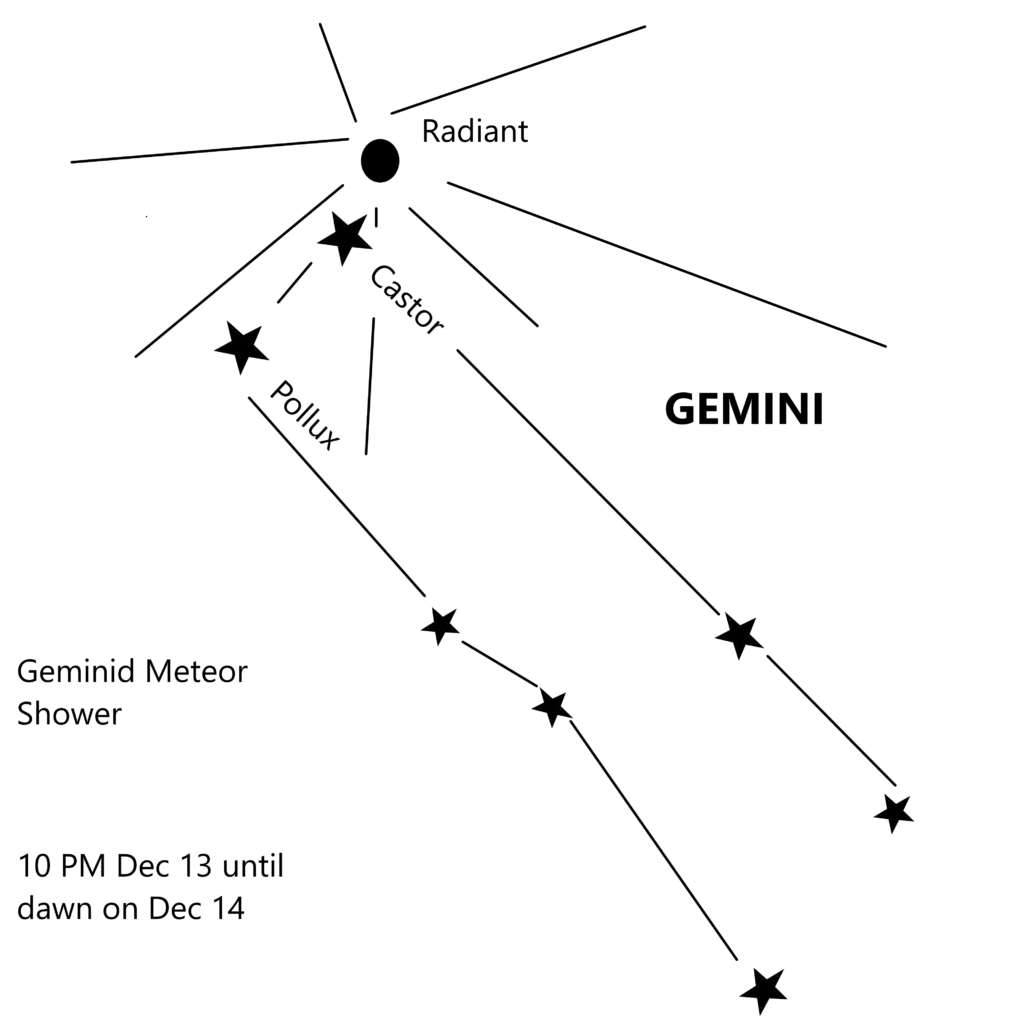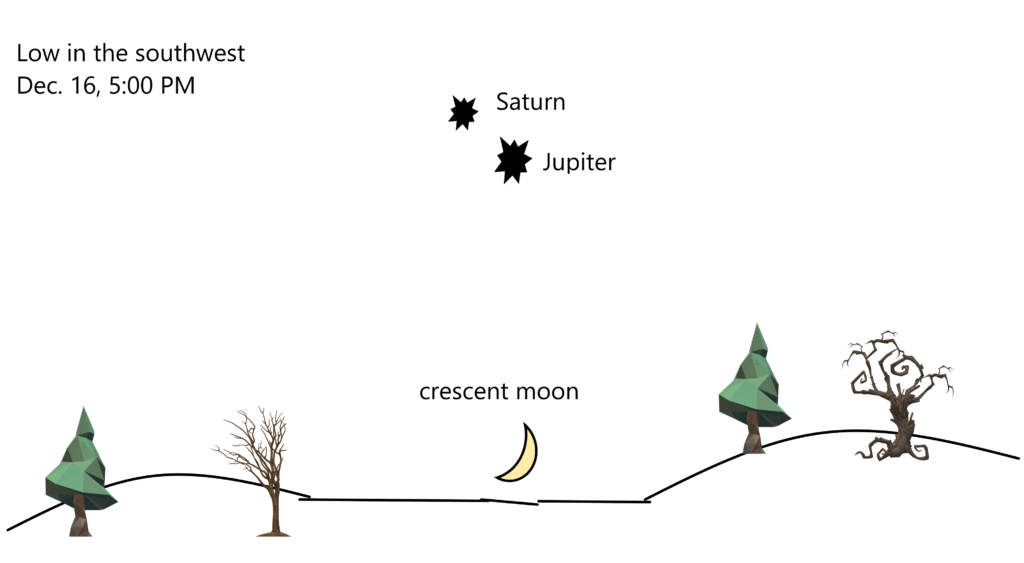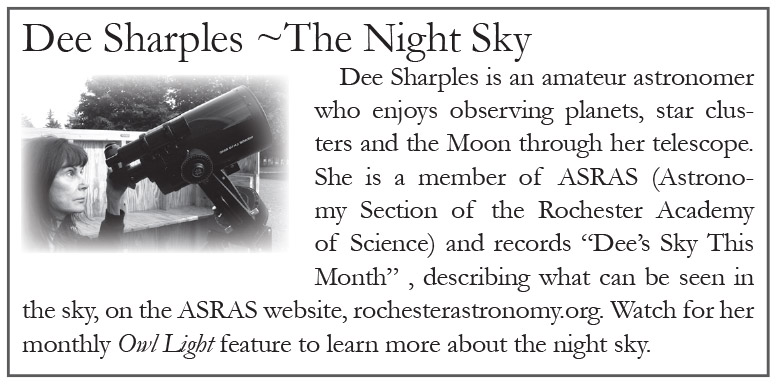Geminids and the Conjunction Between Jupiter and Saturn

One of the best meteor showers of the year occurs in December. The Geminid meteor shower is active from December 4-17. That means on a clear night you’ll likely see a few sporadic meteors from this shower streak across the sky during this time period. The shower peaks from about 10:00 PM on December 13th into the early morning hours of the 14th. The constellation Gemini from which the meteors will appear to originate will be high in the eastern sky on the 13th and overhead by 1:00 AM on the 14th.
Astronomers predict a rate of 100 meteors per hour, but this includes both faint and bright meteors. The Geminids do produce many bright meteors, some with long trails. To spot meteors with long trails look away from the radiant (location in Gemini from which the meteors will appear to originate) by 30 to 40 degrees. Measure this distance using the area covered by your fist held at arm’s length. Each fist width equals 10 degrees.
Fragments from an asteroid named 3200 Phaethon create the meteor shower. There is a debris trail from this asteroid which orbits the sun like we do. Each year in December, the Earth intersects this trail and the debris enters are atmosphere burning up and creating an impressive show.
No equipment is needed to enjoy a meteor shower. Just let your eyes adjust to the darkness for at least 15 minutes and then scan the sky as you face south. Since you’ll be outside in cold temperatures if you plan to hunt for meteors, be sure to dress extremely warm.

The planets Jupiter and Saturn have been a staple in our night sky for several months. This month the two will move toward a conjunction low in the southwestern sky on December 21st. They will appear to move closer and closer to each other as the month progresses until the conjunction when they will be only 1/10th of a degree apart.
On December 16th a crescent moon will lie just below the pair making a pretty sight. Jupiter will shine brightly at magnitude -2.0 while dimmer Saturn will be only magnitude 0.6.
Check out Jupiter and Saturn’s positions in regard to each other every clear night starting December 1st to notice this slow movement. The best time is as the sky darkens around 5:00 PM when they’ll be only 20 degrees above the horizon. You’ll need an observing location with a low, obstacle-free southwest horizon to see them.
The planet Mars will be fairly high in the southern sky at 9:00 PM at the beginning on the month and at 7:00 PM by the end. Although it’s not shining as brilliantly as it was in November, it’s still a bright reddish-hued object at magnitude -0.7.
The winter solstice occurs at 5:02 AM on December 21st. This is the moment when the northern hemisphere is tipped farthest away from the sun. After this date we will begin to experience several more seconds of daylight each day as we slowly move toward spring.
_____________________
Magnitude
Magnitude measures the apparent brightness of a celestial object and is expressed by a decimal. An object with a negative number like our
Sun is brighter.
Sun: -26.7
Full Moon: -12.6
Jupiter: -2.0
Mars: -0.7
Bright star: 0.0
Saturn: 0.6
Dimmest star visible with the unaided eye: 6.0-6.5
How to measure degrees in the sky
A simple “ruler” is to hold your arm straight out and make a fist. The area of the sky covered by your fist measures about 10°. Start at the horizon and by moving your fist up and counting how many “fist-widths” it takes to reach an object in the sky, you’ll have an approximation of its height. To measure 1°, hold your little finger out at arm’s length. The area of the sky covered by your finger is about 1°.
